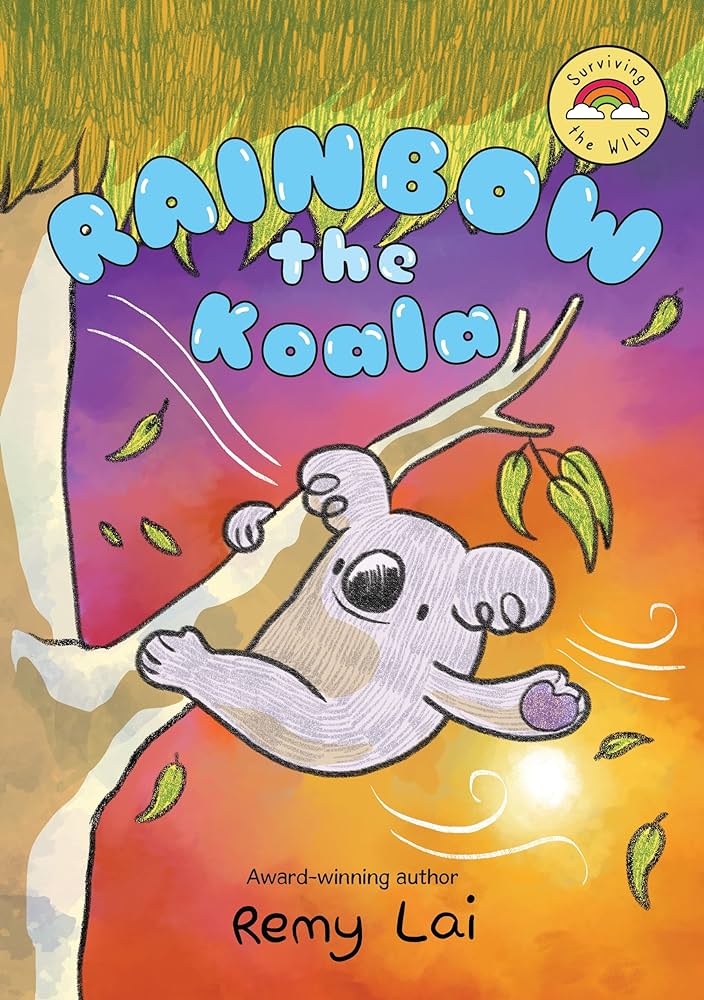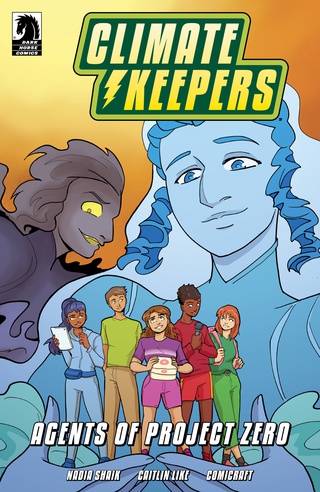“The humans have hurt [Mother Nature] deeply. She could not let them continue” — Windy, Jasper and the Spirit Skies, Vol. 1, p. 45.
| Creator(s) | Collaborative project created by youth members of the Envision Conservatory for the Humanities and the Envision Visual Arts Conservatory (illustrator) |
| Publisher | Reflections Publishing |
| Publication Date | 2021 |
| Genre | Fantasy, Fiction |
| Environmental Themes and Issues | Anthropomorphism, Conversation, Drought, Habitat Destruction, Water Conservation, Plants |
| Protagonist’s Identity | Jasper: Male teenager of Kumeyaay heritage Jasper’s friends include Susie, a Black girl, and John, a white boy |
| Protagonist’s Level of Environmental Agency | Level 5: High Environmental Agency and Activism |
| Target Audience | Children |
| Settings | San Diego, California |
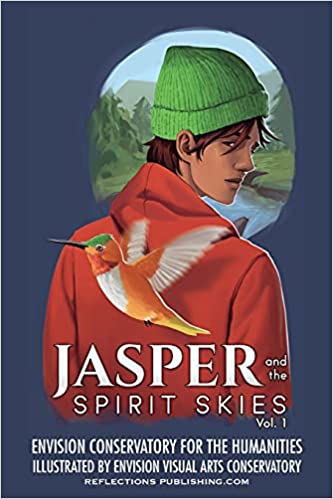
Environmental Themes
Jasper and the Spirit Skies, Volume 1 centers on Jasper, a San Diego teenager of Kumeyaay heritage. Jasper and his friends Susie and John go hiking near San Diego, hoping to go swimming in a river. However, they discover that the river has dried up, leaving behind a barren riverbed. As Jasper explores the desert-like landscape, he finds a shard of bright blue magical talisman that gives him a vision of the river rejuvenated and overflowing with water. He returns back to San Diego with his friends, where they discover that other humans have vanished and an unusual number of cacti now line the streets. After speculating about the sudden appearance of the cacti, the teenagers begin to spray each other with a garden hose, wasting water, even though Susie warns, “Dude, we’re in a drought!” (Envision 19). As they play with the water, all three teenagers begin to transform into cacti, though Jasper’s found talisman reverses his metamorphosis. Shaken, he returns home, vowing to find a way to save his friends.
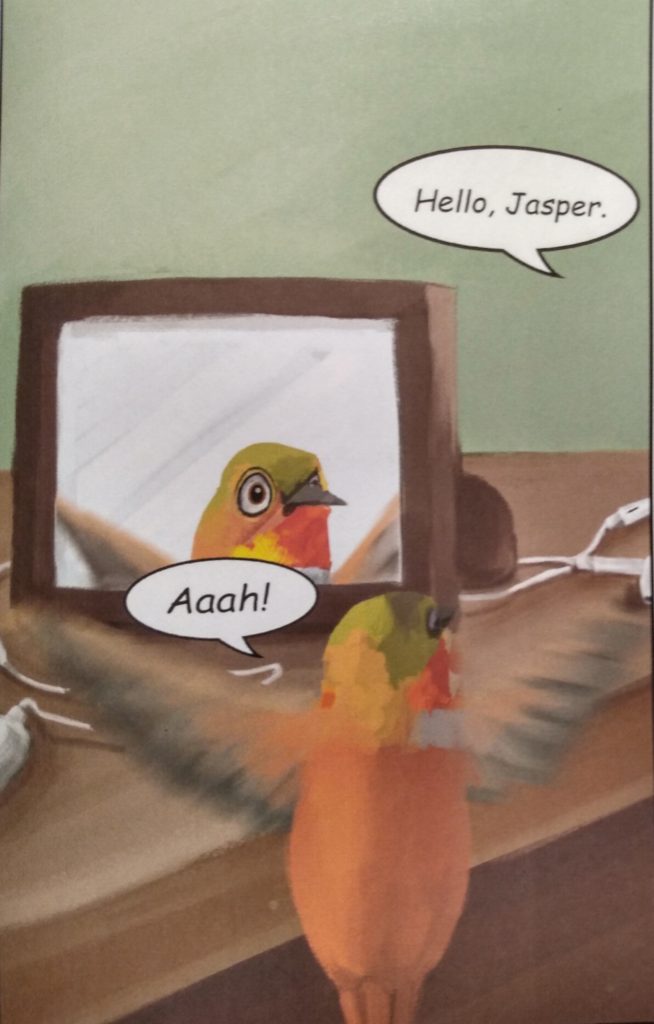
The next day, Jasper wakes up and discovers that he has transformed into a Rufous Hummingbird. Another hummingbird, Windy, arrives and explains that Mother Nature has transformed all of the other human San Diego residents into cacti as punishment for their harmful behavior: “The people were wasting water. She did it to save the town” (Envision 45). In order to save his friends, Windy informs Jasper, he will need to find all four pieces of the talisman, which will form a map that will guide him to Mother Nature. In his new hummingbird form, Jasper returns to the Laguna Mountains to find the first piece of the talisman. In the mountains, he encounters a series of anthropomorphized animals, including Mai, a coyote who wears glasses, and a raccoon dressed like a rap singer. He wins the talisman back from the raccoon after answering the animal’s riddle. Returning to San Diego, he discovers that a development company will soon bulldoze the cacti, killing all of his friends. The comic concludes with Jasper and Mai traveling to Panama to search for the second talisman in hopes of rescuing the humans.
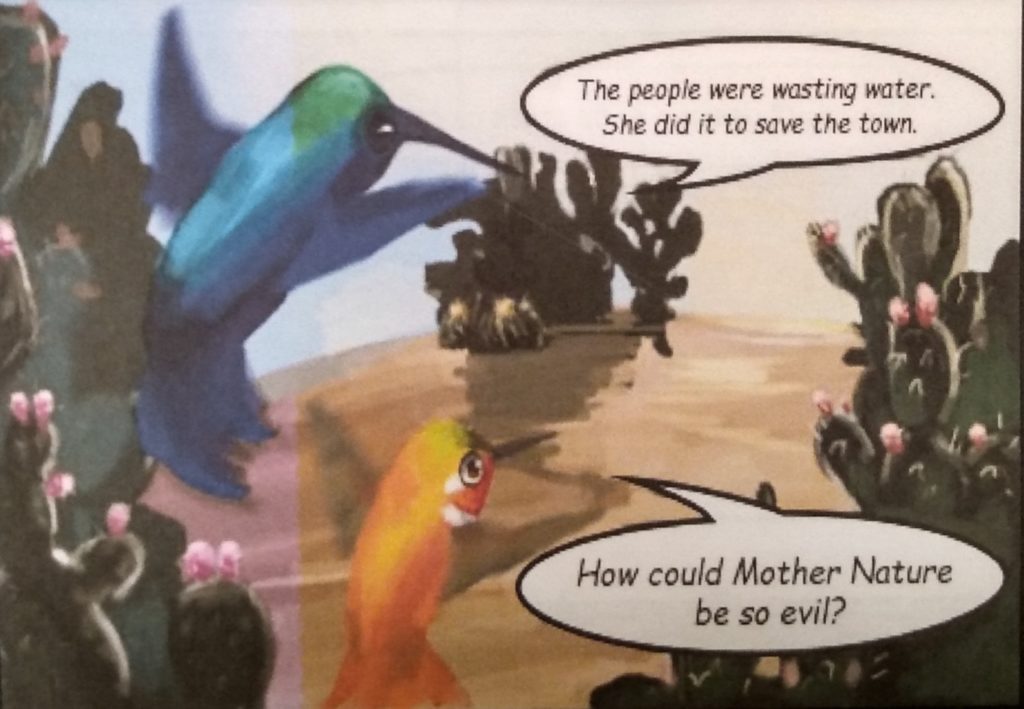
This comic is the first volume in a planned four-volume, collaborative graphic novel series created by high school students at Canyon Crest Academy’s Envision Conservatory for the Humanities and the Envision Arts Conservatory. Students at Canyon Crest Academy’s sister school in Panama will produce the second volume. The collaborators seek to educate readers about environmental stewardship, and the comic also incorporates elements of Kumeyaay culture and mythology, such as the coyote. Additionally, each volume will depict a different biome, with volume one featuring a desert biome.
Paratexts
The comic’s backmatter includes an acknowledgements page that acknowledges the Kumeyaay people as the original inhabitants of San Diego and lists over fifty students and adults who collaborated on the project. Additionally, the paratext includes a one-page list of Factoids that educates readers about the importance of the hummingbird in Native American cultures, provides facts about the Rufous Hummingbird, and highlights the ways that Kumeyaay culture shaped the comic’s narrative.
Additional Resources
Sutton, Marsha. “Education Matters: Canyon Crest Students Partner with Panama to Create an Environmental Comic Book.” Del Mar Times, 22 August 2019, https://www.delmartimes.net/our-columns/story/2019-08-22/education-matters-canyon-crest-students-partner-with-panama-to-create-an-environmental-comic-book.


